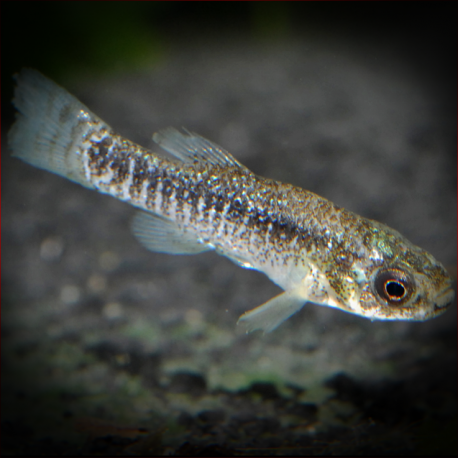More info
Datasheet
| Minimum Tank Size | 60 litres / 15.85 US gallons |
| Maximum Size | 4.5cm / 1.77inches |
| Temperature | 2°C / 35.60°F - 30°C / 86.00°F |
| Hardness | 10.03dgH / 179ppm - 30.03dgH / 536ppm |
| pH | 7.5-9.0 |
General Description"All Algerian Aphanius populations were considered to be representative of A. saourensis until its formal description in 2006, distinguishing it morphologically and genetically from related species. Not as vibrant in coloration as some of its counterparts, the species boasts intriguing behavior and constant activity, making it an engaging subject for dedicated aquarists intrigued by long-term conservation projects."
Aquarium Setup"A. saourensis thrives in a simple tank setup with crucial features including multiple obstructed lines of sight and suitable surfaces for egg deposition. Providing ample space for females and lesser dominant males to evade aggressive dominant males during spawning is vital. The addition of acrylic wool mops, filamentous algae, and fine-leaved plants like Java moss is beneficial, although marine salt in the water is essential. While substrate and strong filtration are optional, exposure to natural sunlight enhances the fish's vibrancy and health."
Behaviour"Due to its specific water needs and territorial spawning behavior, A. saourensis is not recommended for community tanks but rather for solitary maintenance. Maintaining a group is advisable, with a suggested female-to-male ratio of two to three females per male for ideal social dynamics."
Feeding and Diet"Aphanius species, including A. saourensis, are micropredators feeding on small aquatic organisms such as crustaceans, worms, insect larvae, and zooplankton. In captivity, they adapt to dried foods but should be regularly offered live or frozen options like Artemia, Daphnia, or bloodworms, especially during spring and summer reproductive seasons."
Reproduction & Dimorphism"Captive breeding of A. saourensis is relatively straightforward with proper tank conditions. Females spawn continuously between April and November, while males defend temporary territories to entice females. Females lay eggs individually or in small batches, attaching them to surfaces. A notable sexual dimorphism exists, with males displaying silver/blue patterning and distinct fin markings, while females are larger with plain coloration and a dark spot at the caudal peduncle."
Habitat and Distribution"Endemic to the Oued Saoura river basin in Algeria, A. saourensis inhabits shallow, slow-moving streams with dense submerged plant growth. Peculiarities in its distribution highlight endangerment, exacerbated by introduced species and habitat degradation, leading to a critical endangered status according to reports."

